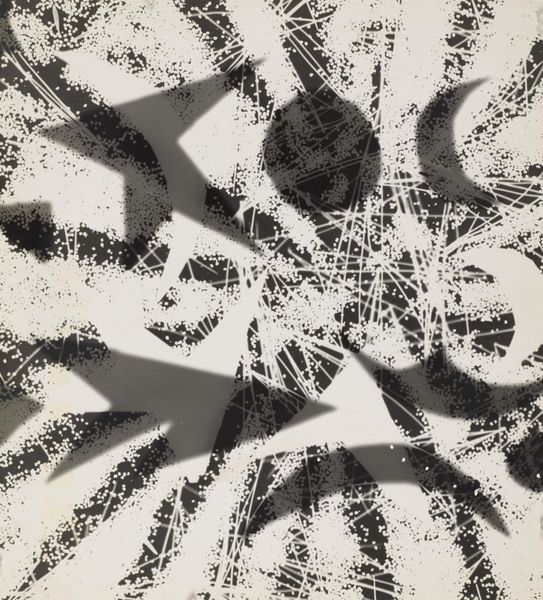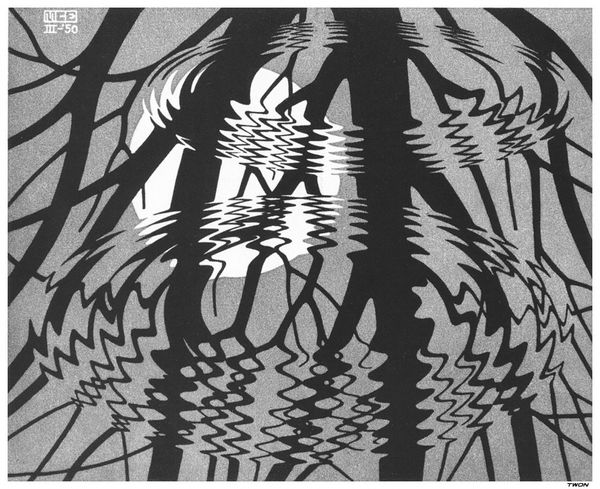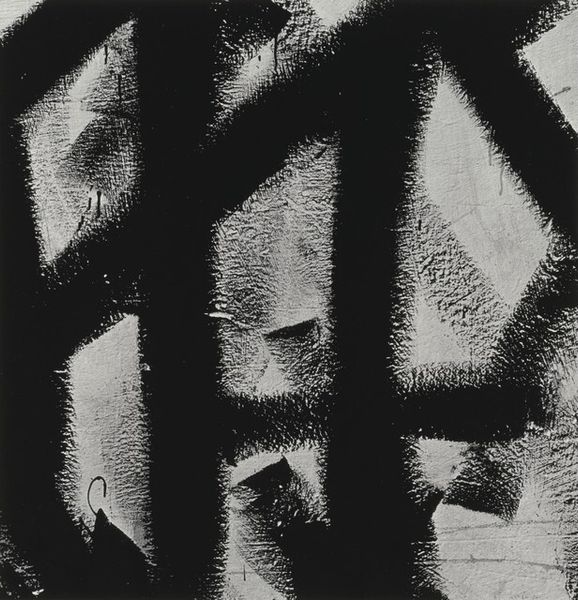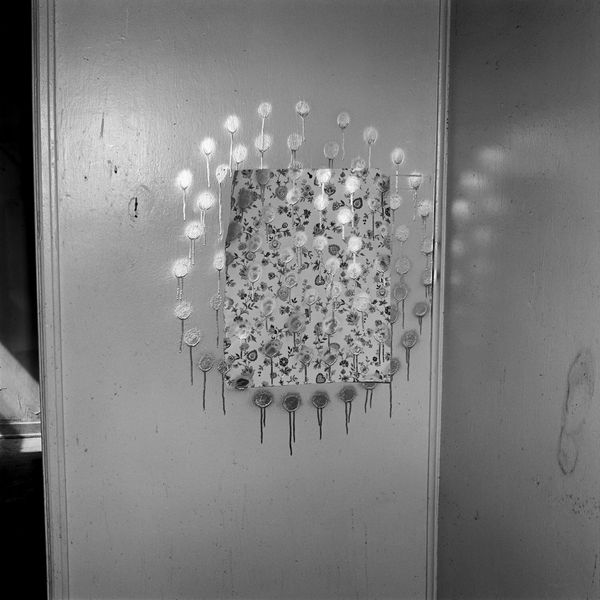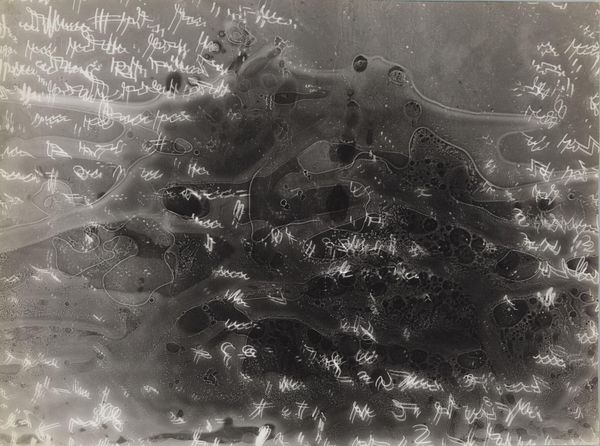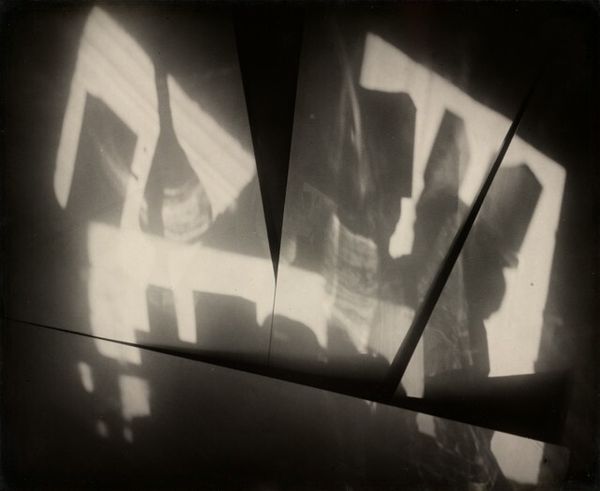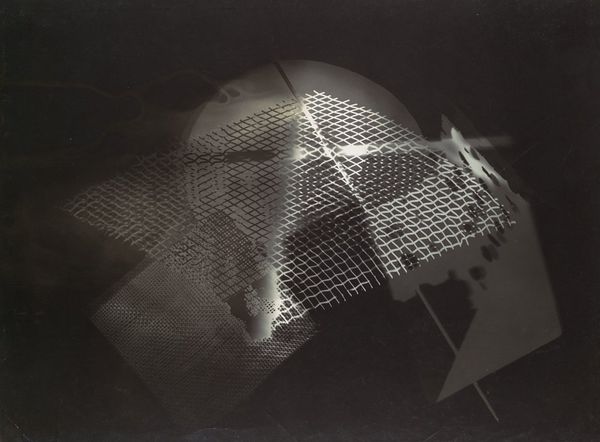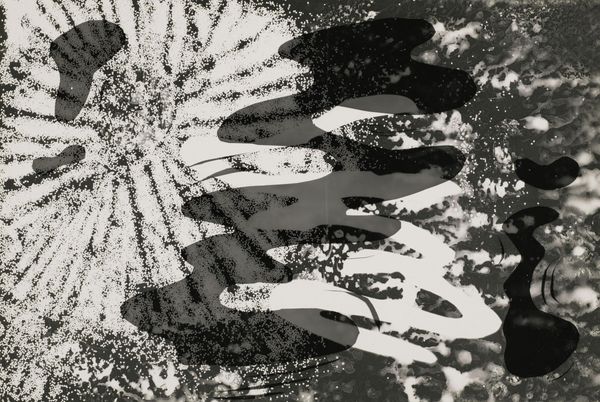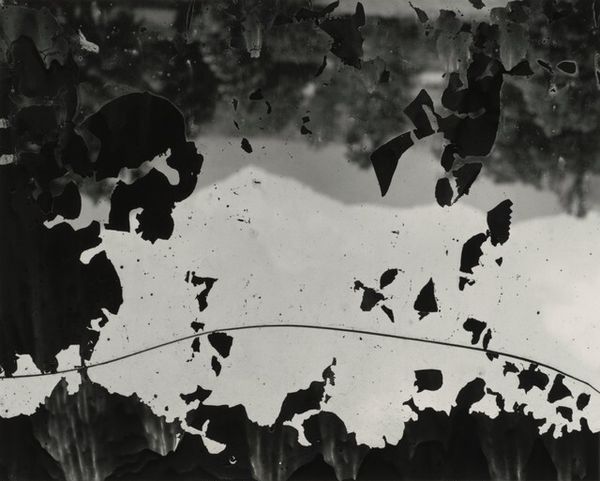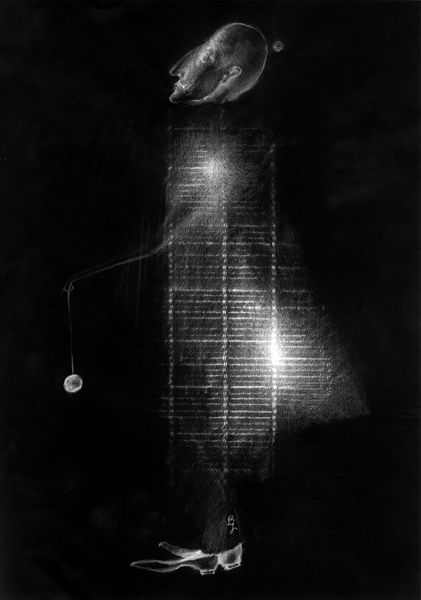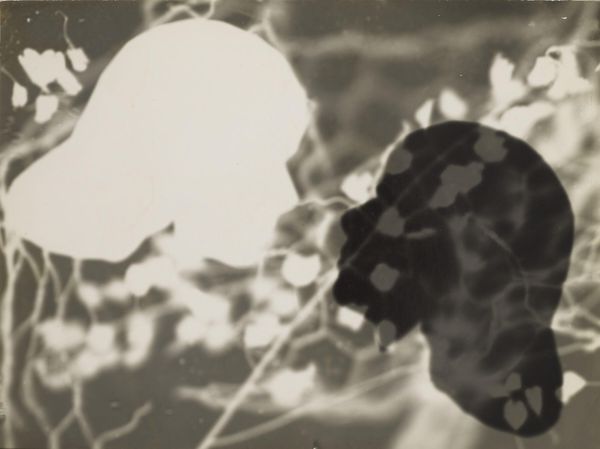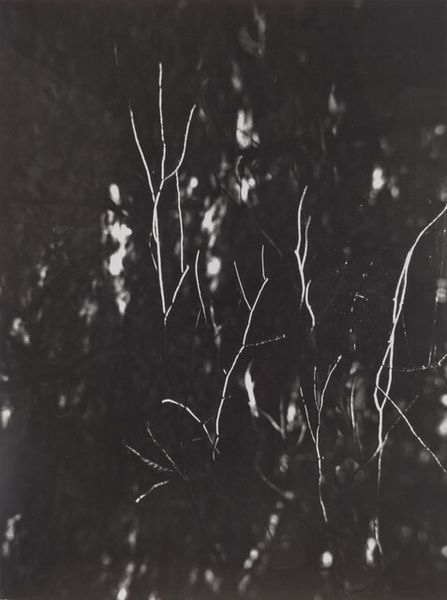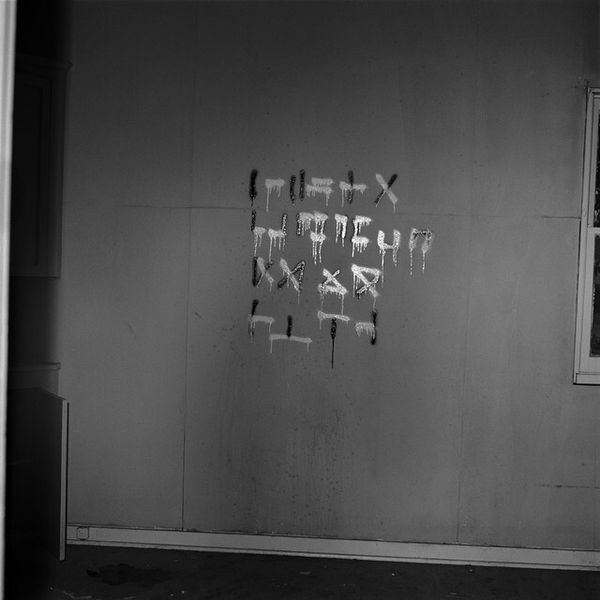
#
3d printed part
#
sculptural image
#
blurred
#
dark monochromatic
#
abstract form
#
macro
#
unfocused background
#
blurriness
#
monochrome
#
metal texture
Dimensions: image: 34.93 × 34.93 cm (13 3/4 × 13 3/4 in.) mat: 62.23 × 59.69 cm (24 1/2 × 23 1/2 in.) framed: 64.14 × 61.6 × 3.81 cm (25 1/4 × 24 1/4 × 1 1/2 in.)
Copyright: National Gallery of Art: CC0 1.0
Curator: Welcome. Today, we are looking at "74V42" by John Divola, dating sometime between 1973 and 1993. Editor: My initial impression is one of fractured order. The grayscale tonality lends itself to an almost brutalist aesthetic, though tempered by what appears to be almost graffiti-like embellishments. Curator: That's insightful. Let's consider the interplay of texture. Divola masterfully utilizes a monochrome palette to highlight surface variations. Notice the tension between the seemingly regimented pattern towards the center and the chaotic spray paint markings that frame it. What is most interesting to me is the lack of details of his chosen materials. Editor: Yes, there’s a palpable sense of material investigation here. It strikes me that this could very well be an abandoned structure, perhaps a building slated for demolition. This kind of place becomes a liminal space. His approach brings forward not just the formal components but the circumstances surrounding their production—the act of artistic intervention within such context. Curator: Precisely. The ambiguity of forms invites semiotic interpretation. The overlaying of gestural lines and the almost pixilated grid prompt questions about the function of the architectural space beneath and the history embedded within those forms. There’s almost a binary opposition suggested here—structure versus chaos, intentionality versus chance. Editor: I'm interested in how he exploits the tension between planned interventions and uncontrolled application. Is the photograph documenting an intervention, or is the photograph *itself* the primary material process by which we see? Either way, it seems a dialogue is created between the artist’s intent, the properties of his materials, and the environmental factors that would impact their use. Curator: And that dialogue transcends mere representation. The aesthetic isn’t just depicting reality, but also shaping a visual rhetoric where form itself becomes a language. This visual complexity demands our attention. Editor: Absolutely. The value of art often resides in its capacity to generate conversation beyond the aesthetic and touch upon something deeply anchored in material experience and social understanding. I appreciated being able to look at the work through both the lens of form and physical history.
Comments
No comments
Be the first to comment and join the conversation on the ultimate creative platform.
